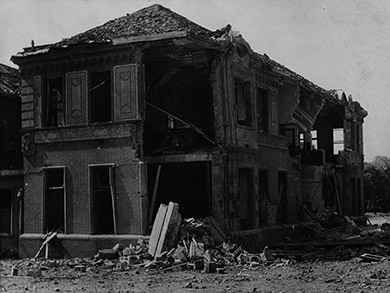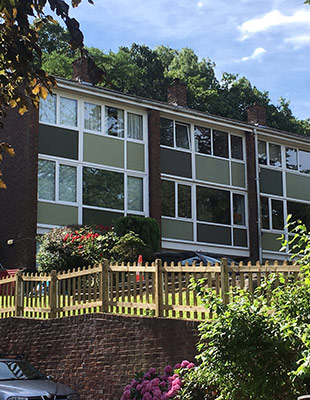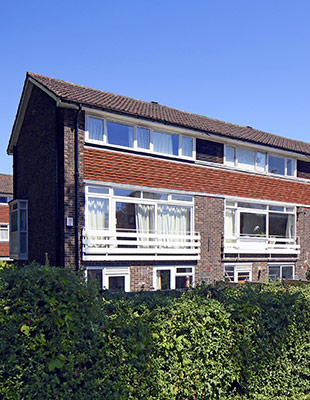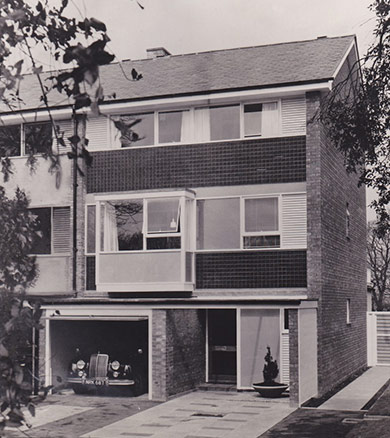Discover 400 years of The Dulwich Estate
Our neighbourhood has a fascinating history. Find out about The Dulwich Estate and how it has changed over the last four centuries.
1940-1945: Buildings on the Estate suffer bomb damage
During World War II, property on the Estate – including the College and the Chapel – suffered badly from bombing and V1 rockets.

Dulwich College suffered bomb damage to its science building
Picture credit: Dulwich College
1946: Camberwell Council focuses on social housing
Major social changes, including a focus on building thousands of council homes, saw substantial changes to the Estate. Between 1946 and the early 1950s a large number of old houses on the biggest sites were compulsorily purchased by Camberwell Council to be developed as council housing. The 1947 Town and Country Planning Act required the Estate to prepare a ‘Dulwich Development Plan’ and when the Council funding began to dry up , the Estate stepped in. The Estate set up a joint venture with Wates, a large house builder, and between 1957 and the late 1960s over 2000 new homes were built. Designed by the Estate’s architects, Austin Vernon & Partners, they set a high architectural standard.

Fine post-war architecture is a feature of the Estate

1967: The Leasehold Reform Act stimulates house sales
The Leasehold Reform Act 1967 gave some leaseholders the right to buy their homes when the lease expired. Introduced to prevent large scale evictions of Welsh miners when the leases of their tied housing ran out, it had a major impact on The Dulwich Estate too. Older houses on short leases, which had previously proved difficult to sell, suddenly became desirable.
Foreseeing the potential impact this would have on property around Dulwich, the Estate set up a Scheme of Management to manage development and protect the unique character of our historic neighbourhood.

The Leasehold Reform Act 1967 gave some leaseholders the right to buy their homes when the lease expired. This led to increased house sales.
1995: The Charity scheme is revised
To enable more flexible and transparent management of the Estate and the Foundation, new governance arrangements were approved by the Charity Commission in July 1995.
The Boards of Estates Governors and College Governors ceased to exist on that day. Their functions were assumed by the trustees of The Dulwich Estate and by the trustees of the Dulwich Almshouse Charity.
All four of the parishes from which the original beneficiaries were chosen retain formal connections with the Dulwich Almshouse Charity. The trustees of the Estate also became trustees of Christ’s Chapel of God’s Gift at Dulwich.
Separate Boards of Governors came into existence for Dulwich College, JAGS and for Alleyn’s School.
These arrangements continue today.




